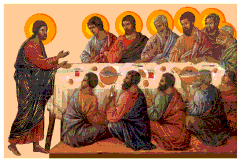
Apostolic Succession Bishops and Dioceses Intercommunion Centering Prayer Contact Us
History of the International Free Catholic Communion

The history of the IFCC is fundamentally rooted in the story of the Old Catholic Church of the Netherlands. So, we have included here a brief history and explanation of the Old Catholic Church. However, our Apostolic lineage also derives from the Roman Catholic Church (in Brazil, Mexico and the Philippines), the Anglican Communion and various Eastern Orthodox Churches (Syrian, Russian, Greek, etc.). In the future we will expand upon our historical connection with these other ancient churches, as well as more recent developments which led to the establishment of the IFCC as a unique expression of Catholicism in the modern world.
In the meantime, please visit http://www.concentric.net/~cosmas/indcath.htm for “A Brief History of Independent Catholicism in North America” by Alan R. Kemp (ed.). Here the historical link to the Roman, Anglican and Eastern Orthodox traditions is explored.
The Old Catholics are a body of Christians committed to the Person of Jesus Christ and His teaching. We accept and believe the testimony of His Apostles, eyewitnesses of His Life, Death and Resurrection from among the dead. They passed on to succeeding generations their own testimony about Jesus Christ and His life. By the proclaiming of His Gospel and the giving of their own testimony (called the Apostolic Tradition), the Church which the Lord instituted was built up. Old Catholics are an historic part of the One, Holy, Catholic and Apostolic Church and have their origins in the Ancient Catholic Church of the Netherlands. We will examine the traditions of the Western and Eastern lineage herein. The Old Catholic Church of the United States bears its Apostolic lineage from the Ancient Catholic Church of the Netherlands, the Syrian Jacobite (Oriental) Orthodox Church, and the Russian Orthodox Church.
The area of Europe known as the Low Countries was missionized by St. Willibrord in the Seventh Century firmly establishing the Catholic Faith and Tradition in the Netherlands and other countries in that region. Early on, three principal dioceses were established in the cities of Utrecht, Deventer and Haarlem to administer the affairs of the Church in the territory. Utrecht eventually became the archiepiscopal see with supervision over Deventer and Haarlem. Assenting to a petition made by the Holy Roman Emperor Conrad III and Bishop Heribert of Utrecht, Blessed Pope Eugene III, in 1145 A.D. granted the Cathedral Chapter of Utrecht the right to elect successors to the See in times of vacancy. This privilege was confirmed by the fourth Council of the Laterian in 1215. The autonomous character of the Ancient Catholic Church in the Netherlands was further demonstrated when a second grant by Pope Leo X, Debitum Pastoralis, conceded to Philip of Burgundy, 57th Bishop of Utrecht, that neither he nor his successors, nor any of their clergy or laity, should ever, in the first instance, have his cause evoked to any external tribunal, not even under pretense of any apostolic letters whatever; and that all such proceedings should be, ipso facto, null and void. This papal concession, in 1520, was of the greatest importance in defense of the rights of the Church.
Armed with the protection of the papal concessions, the Church in the Netherlands continued to minister even through the Reformation. During this period of strife, the Church in the Netherlands, as in many other countries, was forced to "go underground" in order to survive. But survive and remain extant, it did. Eventually, the Archbishop of Utrecht and other Church leaders reached an informal agreement with the civil government, whereby it could again function openly without interference from the Reformers.
Following the First Vatican Council in 1870 (at which the hierarchy of the Church of Holland were refused admittance), a considerable dissent among Catholics, especially in Germany, Austria and Switzerland, arose over the dogma of papal infallibility. The dissenters, while holding the Church in General Council to be infallible, could not accept the proposition that the Pope, acting alone, in matters of faith and morals is infallible. Many formed independent communities that came to be known as Old Catholic. They are called Old Catholics because they sought to adhere to the beliefs and practices of the Catholic Church of the post-Apostolic era. The Old Catholic communities appealed to the Archbishop of Utrecht who consecrated the first bishops for these communities. Eventually, under the leadership of the Church of Holland, these Old Catholic communities joined together to form the Utrecht Union of Churches. The Utrecht Union of Churches approbated, in 1908, the establishment of a mission in Great Britain. Archbishop Gerardus Gul of Utrecht consecrated Father Arnold Harris Matthew, a resigned Roman Catholic priest, Regionary Bishop for England. It was Bishop Mathew's charge to minister among Anglo-Catholics and Roman Catholics impeded from full participation in the life and sacraments of the Church. Toward this end, Bishop Mathew consecrated Austrian nobleman, Prince Rudolph Edward de Landes Berghes, in 1913 for work in Scotland. Prince Rudolph (1873-1920) left England for the United States at the onset of World War I.
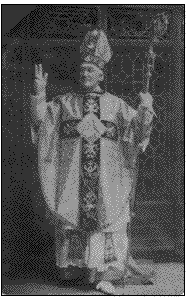
Bishop de Landes Berghes, in spite of great difficulty and isolation from the Utrecht Union of Churches, due to Bishop Mathew withdrawing from the Union, was able to plant the roots of an independent expression of Catholicism in America. He elevated to the episcopacy two priests, Carmel Henry Carfora and William Francis Brothers. Each of these bishops, in his own manner, continued the mission begun by Bishop de Landes Berghes. With the passing of these original organizers from the ecclesiastical scene, the Old Catholic Church in the United States has evolved from a fairly centralized administration with structured oversight of ministry to a local and regional model of administration with self-governing dioceses and provinces more closely following St. Ignatius of Antioch's concepts of the Church as a communion of communities each laboring together to proclaim the message of the Gospel.
Another Old Catholic priest, Fr. Joseph Renee Vilatte, began his minsitry in Wisconsin, which led to the establishment of Old Catholic familial lines making us brothers and sisters to the Oriental Orthodox Churches in Middle East. Fr. Vilatte ultimately became Bishop Vilatte, consecrated bishop under the authority of Mar Ignatius Peter III, Jacobite Patriarch of Antioch. He was consecrated a bishop by Mar Julius, Metropolitan of the Independent Catholic Church of Ceylon, Goa and India, who was assisted by Mar Paul Athanasius, Bishop of Kottayam and Mar George Gregorius, Bishop of Niranam (who was later cannonized as a saint in the Indian Orthodox Church). He then returned to the United States, where his Episcopal lines would stand alongside those of Bishop Mathew, in securing valid lines of Apostolic Succession, both of which the Bishops of the International Free Catholic Communion share.
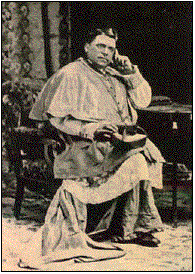
At the suggestion of the Archbishop of Utrecht, the Old Catholic bishops in the United States established the Council of Independent Catholic Bishops as a means to more closely coordinate ministry and serve as a forum for better communication and exchange of ideas and planning. Since its founding in 1982, the Council has achieved some success in bringing a greater sense of unity and purpose and action to the Old Catholic hierarchy in the United States.
Old Catholic and Old Roman Catholic are terms used to identify Old Catholic churches and parishes in the United States who are not necessarily affiliated with ethnic Old Catholic communities such as the Polish National Catholic Church. The original diocese established by the late Archbishop Carfora in the 1920's in Chicago was called the Old Roman Catholic Diocese in the United States. Because of this, nearly all of our Catholic communities are called "Old Catholic" or "Old Roman Catholic".
The faith of Old Catholics is simply that of the Catholic Church as taught by the Church from apostolic times to the present day. The ecumenical Councils clearly express what Old Catholics believe without the need for apology or excuse. In 1823, Archbishop Willibrord van Os of Utrecht reiterated adherence to the unchanging doctrine of Catholicism in the following words: "We accept without any exception whatever, all the Articles of the Holy Catholic Faith. We will never hold nor teach, now or afterwards, any other opinions than those that have been decreed, determined and published by our Mother, Holy Church..." Thus, Old Catholics, tracing their Apostolic Succession through the Roman Catholic Church to the Apostles, participated in the full sacramental ministry of the Church. The Rule of Faith of Old Catholics is faithful adherence to Sacred Scripture and the Apostolic Tradition.
In matters of discipline, administration and procedure, Old Catholics differ from the Roman Catholic Church. For example, clerical celibacy (which is a matter of discipline) is optional among Old Catholics. Married men may be ordained and in many of our dioceses clergy may, with prior episcopal consent, enter into Holy Matrimony after ordination. Liturgical expression is also a matter of discipline determined by the local bishop. Consequently, many Old Catholic communities have adopted the liturgical renewal promulgated following the Second Vatican Council while still maintaining Tridentine liturgy, in Latin or direct translation into classical or modern English, in those parishes that desire it. Eastern rite Old Catholic parishes exist as well, which follow the ancient liturgies of that rich tradition. Because Old Catholic communities are small, they are able to success fully implement the Ignatian model of the Church referred to earlier. This concept views the faithful with their clergy and bishop as a community or family in loving concern for each other and each working together to live the Scriptural commands in their daily lives as Christians bringing the love of Christ to others. Old Catholic communities utilize their size and lack of highly detailed structure to the very best advantage organizationally by their ability to expedite decisions affecting the sacramental and community life of the faithful, within the revelation and authority of Holy Scripture and Apostolic Tradition.
There are other distinctives by which Old Catholic communities are differentiated from Roman Catholic parishes. The matter of papal infallibility defined by Vatican Council I is a non-issue for Old Catholics, since we are not under papal jurisdiction. All Old Catholic communities accord the Holy Father that respect due him as Successor of St. Peter, Prince of the Apostles and Patriarch of the West. Old Catholics adhere to the teaching from apostolic times that the Church in General Council is infallible. Another difference, is that divorced people who remarry are treated in a pastoral manner and not excluded from the sacramental life of the Church. Further, the matter of contraception is treated as a matter of personal conscience between husband and wife. Old Catholic theology recognizes that the Church's teaching magisterium has no less than two objects: the formation of conscience, in which case authority has an instructive quality; and the nurturing of a formed conscience to full maturity, in which case authority is guiding but not directive.
By developing new methods and ideas with an emphasis on community, and Catholicism which expresses a warmth and interest in the total person, Old Catholic communities are able to address the needs of today's society at the beginning of the Third Millennium. Old Catholicism is an understanding of the Western and Eastern traditions in one complete tradition. For the contemporary Catholic searching to maintain his/her Faith but desiring to do so without excessive institutionalism that often loses contact with the individual; for those with a Catholic background who feel impeded from full participation in the life and Sacraments of the Church; for the many unchurched who desire the joy and peace of Our Lord's Word and His Holy Sacraments, Old Catholic communities provide a viable alternative and allow a person to be a part of Christ's Church, and beat peace with his/her conscience. Old Catholic communities, because of their size, can give individual attention to the individual spiritual needs of the faithful and, where necessary , develop unique ministries to meet those needs.
The International Free Catholic Communion and the Independent/Old Catholic Movement
The International Free Catholic Communion participates in this Independent/Old Catholic tradition by virtue of the fact that our bishops have received episcopal consecration through Old Catholic, Orthodox and Roman Catholic lines. Our Roman Catholic Apostolic Succession derives partially from the late Carlos Duarte Costa, former Roman Catholic Bishop of Botucatu, Brazil, who formed an independent church in the late 1940’s. Of historical note, Bishop Salomeo Ferraz, consecrated by Costa following his separation from Rome, was eventually received back into the Roman Catholic Church in 1960, as a married bishop, without any "reconsecration", and was an active participant in the Second Vatican Council.
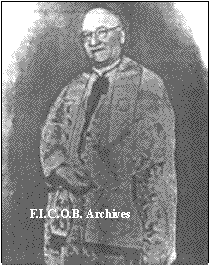
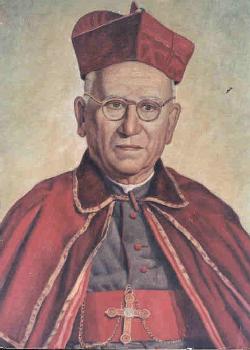
THE DECLARATION OF UTRECHT. A TRANSLATION OF THE PROFESSION OF FAITH, OR DECLARATION, FORMULATED BY THE OLD CATHOLIC BISHOPS ASSEMBLED AT UTRECHT. SEPTEMBER 24TH, 1889
1. We adhere faithfully to the Rule of Faith laid down by St. Vincent of Lerins in these terms: "Id teneamus, ubique quod semper, quod ab onmibus creditum est; hoc est etenim vere pro- prieque catholicum." For this reason we persevere in professing the faith of the primitive Church, as formulated in the ecumenical symbols and specified precisely by the unanimously accepted decisions of the Ecumenical Councils held in the undivided Church of the first thousand years.
2. We therefore reject the decrees of the so-called Council of the Vatican, which were promulgated on July 18th, 1870 concerning the infallibility and the universal Episcopate of the Bishop of Rome, decrees which contradict the faith of the ancient canonical constitution by attributing to the Pope the plenitude of ecclesiastical powers over all Dioceses and over all the faithful. By denial of his primatial jurisdiction, we do not wish to deny the historic primacy which several Ecumenical Councils and the Fathers of the ancient Church have attributed to the Bishop of Rome by recognizing him as the Primus inter pares.
3. We also reject the dogma of the Immaculate Conception promulgated by Pius IX in 1854 in defiance of the Holy Scriptures and the contradiction to the tradition of the first centuries.
4. As for other Encyclicals published by the Bishops of Rome in recent times; for example, the Bulls Unigenitus and Auctorem fidei, and the Syllabus of 1864, we reject them on all such points as are in the contradiction of the doctrine of the primitive Church, and we do not recognize them as binding on the conscience of the faithful. We also renew the ancient protest of the Catholic Church of Holland against the errors of the Roman Curia, and against its attacks upon the rights of national Churches.
5. We refuse to accept the decrees of the Council of Trent in matters of discipline, and as for the dogmatic decisions of that Council, accept them only so far as they are in harmony with the teaching of the primitive Church.
6. Considering that the Holy Eucharist has always been the true central point of Catholic worship, we consider it our duty to declare that we maintain with perfect fidelity the ancient Catholic doctrine concerning the Sacrament of the Altar, by believing that we receive the Body and Blood of our Savior Jesus Christ under the species of bread and wine. The Eucharistic celebration in the church is neither a continual repetition nor a renewal of the expiatory sacrifice which Jesus offered once for all upon the Cross, and it is the act by which we represent upon earth and appropriate to ourselves the one offering which Jesus Christ makes in Heaven, according to the Epistle to the Hebrews ix.11, 12 for the salvation of redeemed humanity, by appearing for us in the presence of God (Heb. ix. 24). The character of the Holy Eucharist being thus understood, it is, at the same time, a sacrificial feast, by means of which the faithful, in receiving the Body and Blood of our Savior, enter into communion with one another (I Cor. x. 17).
7. We hope that Catholic theologians, in maintaining the faith of the undivided Church, will succeed in establishing an agreement upon all such questions as caused controversy ever since the Churches became divided. We exhort the priests under our jurisdiction to teach, both by preaching and by instruction of the young, especially the essential Christian truths professed by all Christian confessions, to avoid, in discussing controversial doctrines, any violation of truth or charity, and in word and deed to set an example to the members of our churches in accordance with the spirit of Jesus Christ our Savior.
8. By maintaining and professing faithfully the doctrine of Jesus Christ, by
refusing to admit those errors which by the fault of men have crept into the
Catholic Church, by laying aside the abuses in ecclesiastical matters,
together with the worldly tendencies of hierarchy, we believe that we shall
be able to combat efficaciously the great evils of our day, which are
unbelief and indifference in matters of religion.
A reference on the Old Catholic Movement from:
CATHOLIC VISITOR, INC. 1978
(an official publication of the Roman Catholic Church)
Old Catholic-several groups, including: (1) the Church of Utrecht, which severed relations with Rome in 1724; (2) The National Polish Church in the U.S., which has its origin near the end of the 19th century; (3) German, Austrian and Swiss Old Catholics, who broke away from union with Rome following the First Vatican Council in 1870 because they objected to the dogma of papal infallibility.
The formation of the Old Catholic communion of Germans, Austrians and Swiss began in 1870 at a public meeting held in Nuremberg under the leadership of A. Dolinger. Four years later Episcopal succession was established with ordination of an Old Catholic German bishop by a prelate of the Church of Utrecht. In line with the "Declaration of Utrecht" of 1889, they accept the first seven ecumenical councils and doctrine formulated before 1054, but reject communion with the pope and a number of other Roman Catholic doctrines and practices. They have a valid priesthood and valid sacraments. The Oxford Dictionary of the Christian Church notes that they have recognized Anglican ordinations since 1925, that they have full communion with the Church of England since 1932, and have taken part in ordination of Anglican Bishops.
Published with Ecclesiastical Approval
OUR SUNDAY VISITOR, INC.
Huntington, Indiana 46750
Home What We Believe Apostolic Succession Bishops and Dioceses Intercommunion Centering Prayer Contact Us
Copyright © 2003 Maclin R. Milner, Jr.
All Rights Reserved